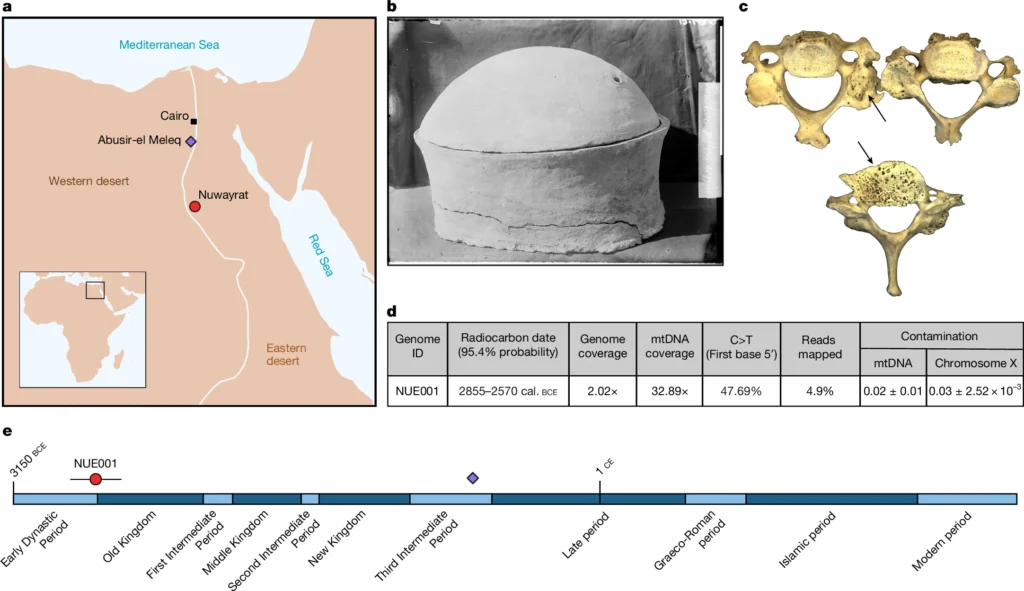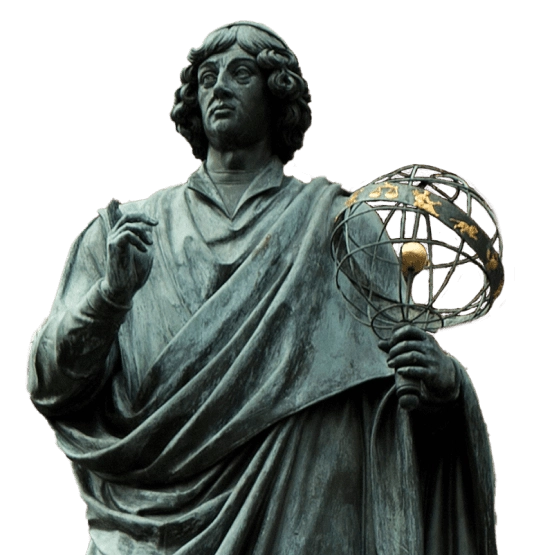Scientists have made a groundbreaking discovery that sheds new light on the life and origins of ancient Egyptian inhabitants. For the first time, researchers have successfully sequenced and analyzed the complete human genome of an individual who lived over 4,500 years ago —a pivotal period for Egyptian civilization at the dawn of the construction of the first pyramids. The results and detailed study were published in the journal Nature.
The remains of a man, whose life was marked by hard physical labor, were originally discovered in 1902 in the town of Nuwayrat, approximately 265 kilometers south of Cairo. The uniqueness of the burial lay in the fact that the body was placed in a large, tightly sealed clay vessel, which was set inside a rock-cut tomb. This unusual burial method is now believed to have created exceptional conditions that preserved genetic material for millennia, despite the harsh—hot and dry—desert climate.

Source: www.nature.com
For over a century, the remains were kept in a museum in Liverpool, where they survived even World War II bombings that destroyed most similar artifacts. Only recently, with the help of the latest technologies, has it been possible to read his complete genome.
The studies reveal that the man was about 60 years old—a venerable age in ancient Egypt. He suffered from advanced arthritis, and his bones show clear evidence of many years of physical labor. Unusual changes in his right foot and limbs suggest he may have been a potter—a conclusion supported by parallels with depictions of craftsmen’s work from that era. Researchers were also intrigued by the fact that he was buried in a tomb of relatively high status.
Genetic analysis confirmed that the man had dark skin, brown eyes, and brown hair. His ancestors mainly came from Neolithic communities in North Africa; however, about 20% of his DNA indicates origins from the Fertile Crescent region, which includes parts of the modern-day Middle East. This discovery confirms the existence of active contacts and exchanges between ancient Egypt and neighboring civilizations.
The research team plans to continue their work by analyzing more ancient skeletons preserved in museum collections. Scientists aim to create a public genetic record of ancient Egypt’s population, opening new opportunities for research into the history, migrations, and identity of one of the most important centers of ancient world civilization.
Source: The Francis Crick Institute, Science Alert, dzienniknaukowy.pl










